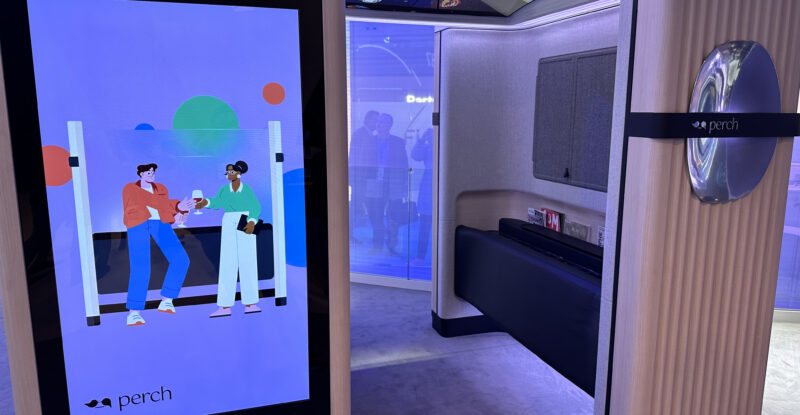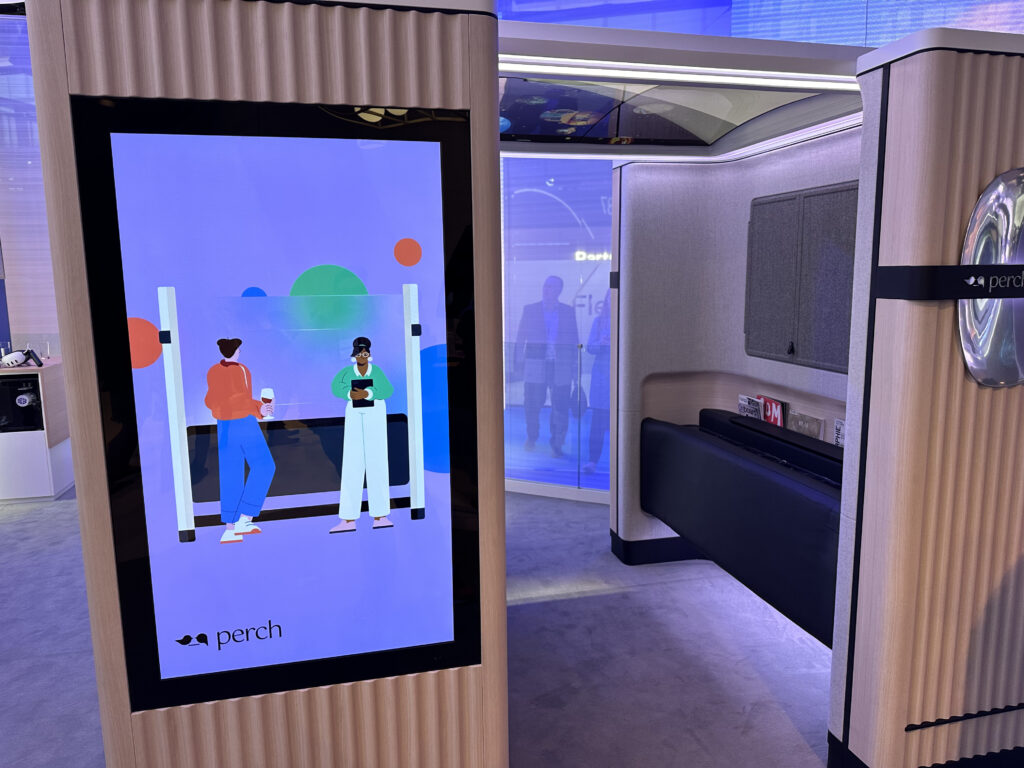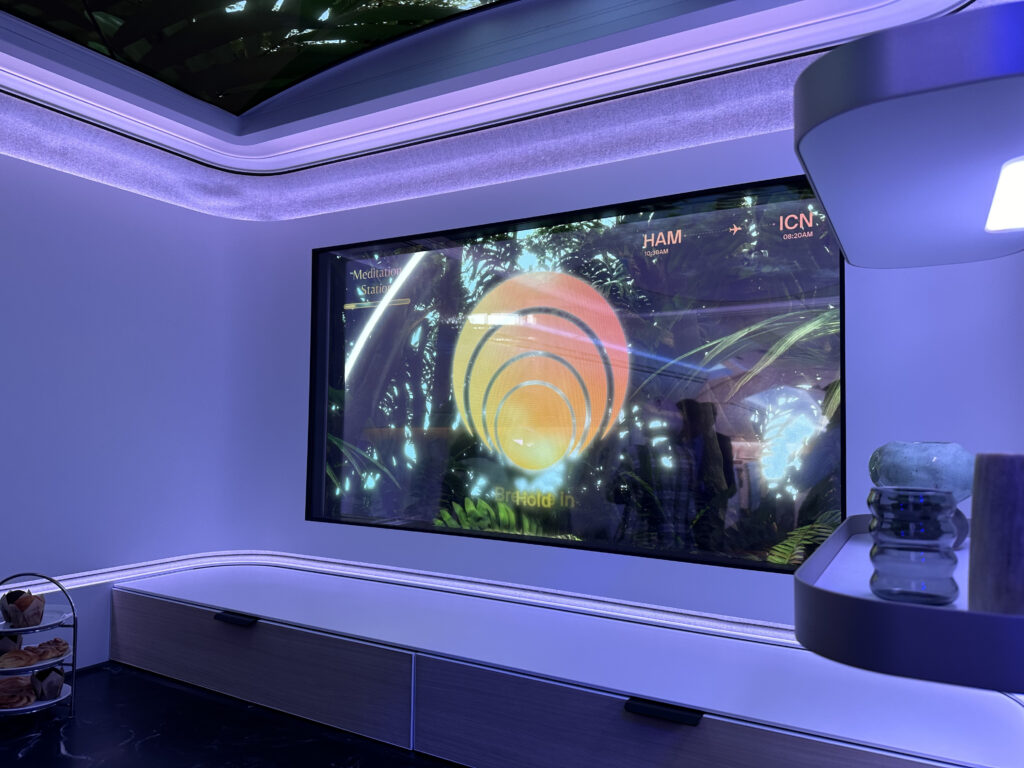HAMBURG — In a cabin interiors context where the importance of a signature door 2 welcome area is conflicting with the growing lack of seat-cabin-monument integration, Boeing’s Encore subsidiary is asking thought-provoking questions with its Perch concept, unveiled at this year’s Aircraft Interiors Expo.
Perch is a stylish monument addition to the door 2 area, primarily featuring onboard applications for large OLED panels from LG — which is already working with Lufthansa Technik via the AERQ joint venture — within a stylishly designed monument and space to, well, perch.
Boeing is leaning into partnerships here, with its Encore unit working with LG Display, LIG Nex1, the Korean Ministry of Trade, Industry and Energy, and KEIT (the Korea Planning and Evaluation Institute of Industrial Technology).

Boeing collaborated with LG and Korean government agencies in putting the Perch together. Image: John Walton
For the design, Encore has embraced creamy, natural neutrals: undulating wood panelling on the outside with a feature brand element on the right and a vertically oriented 55-inch OLED panel to the left as passengers walk onto the aircraft.
This kind of panel has been seen before as a concept in this kind of space, and at present it remains something of a solution looking for a problem to fix: here, it’s just used for branding rather than as, say, a wayfinding panel for boarding, a connection information panel prior to descent, an information panel during cruise, and so on.
Inside the Perch, though, there’s more of a set of suggestions on the transparent 30-inch OLED dividing the cabin from the Perch: information about baggage claim on arrival, a mindful guided breathing app, and a bit of trivia that could be fun for passengers standing around having a drink.
To that end, below that transparent OLED there are attractive cupboards that feel like a living room bar unit, with a curved stone bar-top surface and some storage drawers that could also be a spot to feature bottles, glassware or snacks.
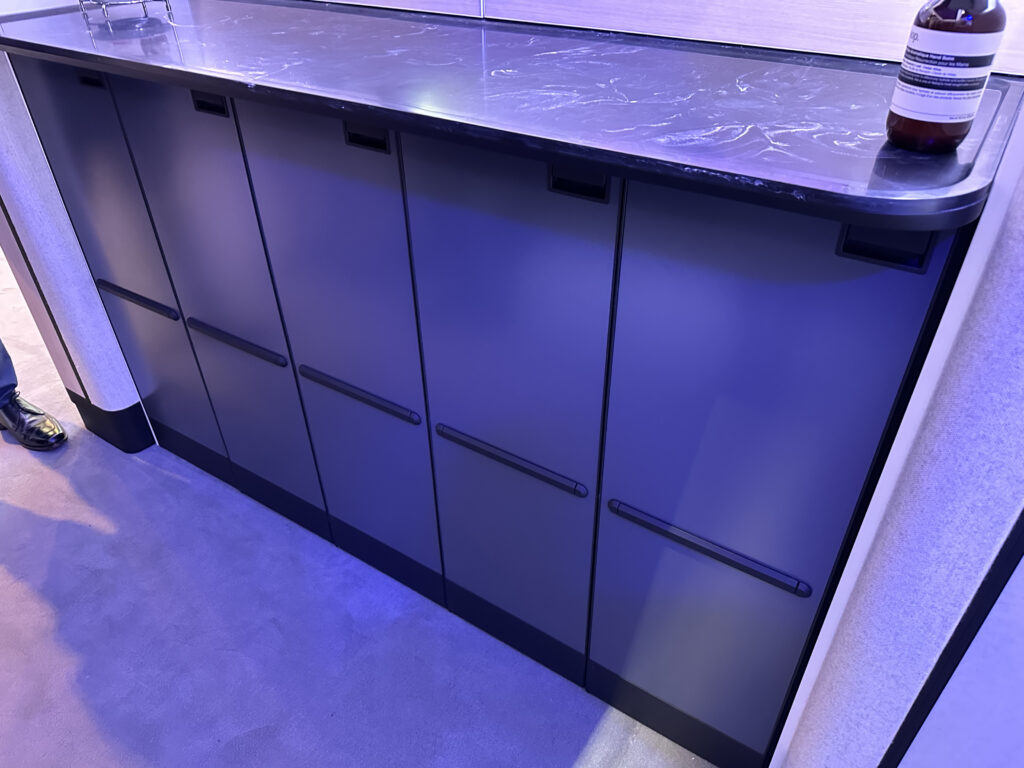
A key question for any kind of space like this is how to manage the needs of galleys while offering pleasant areas for passengers to use. Image: John Walton
On the other side of the Perch is a cushioned vertical surface with a small lip that enables actual perching. Above this is a textured cupboard that could open up to anything an airline desired: a bar, a tea wall, a coffee station, or so on.
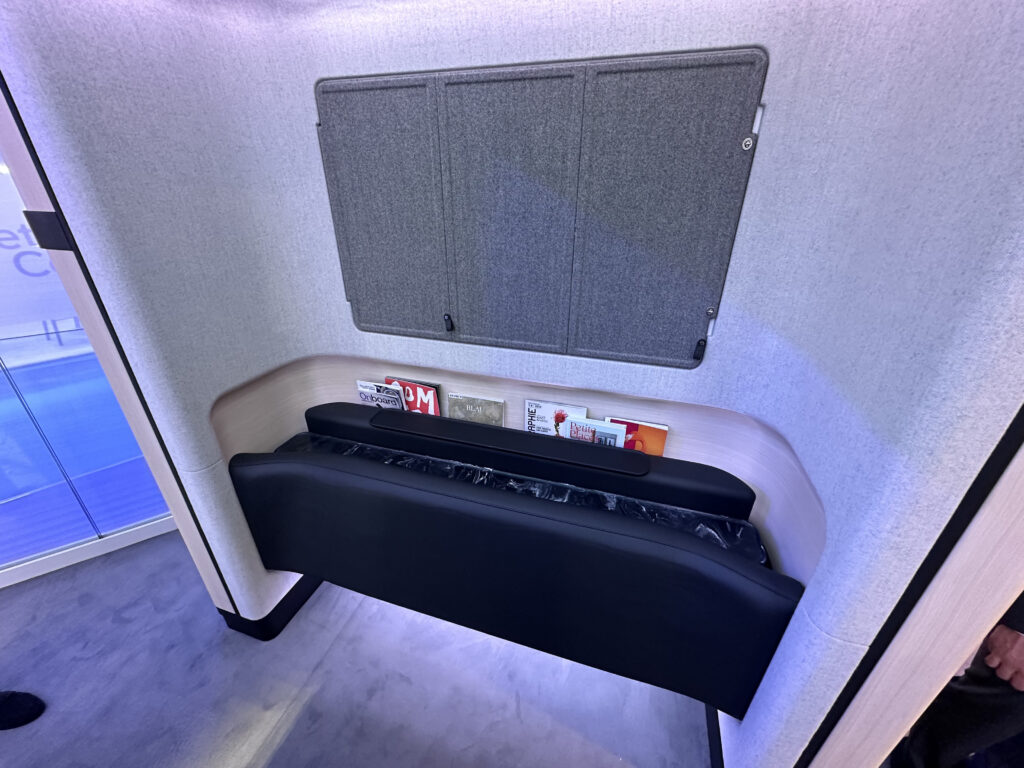
The colour, material and finish of this design is thoroughly pleasant — timelessly residential. Image: John Walton
Overhead is a curved OLED panel installed to match the arc of the airplane’s ceiling, but here there is little use except to simulate a starry sky. And thus to a key dual linked question for these large screens: what is the benefit, and is it worth the weight and power installations that they require?
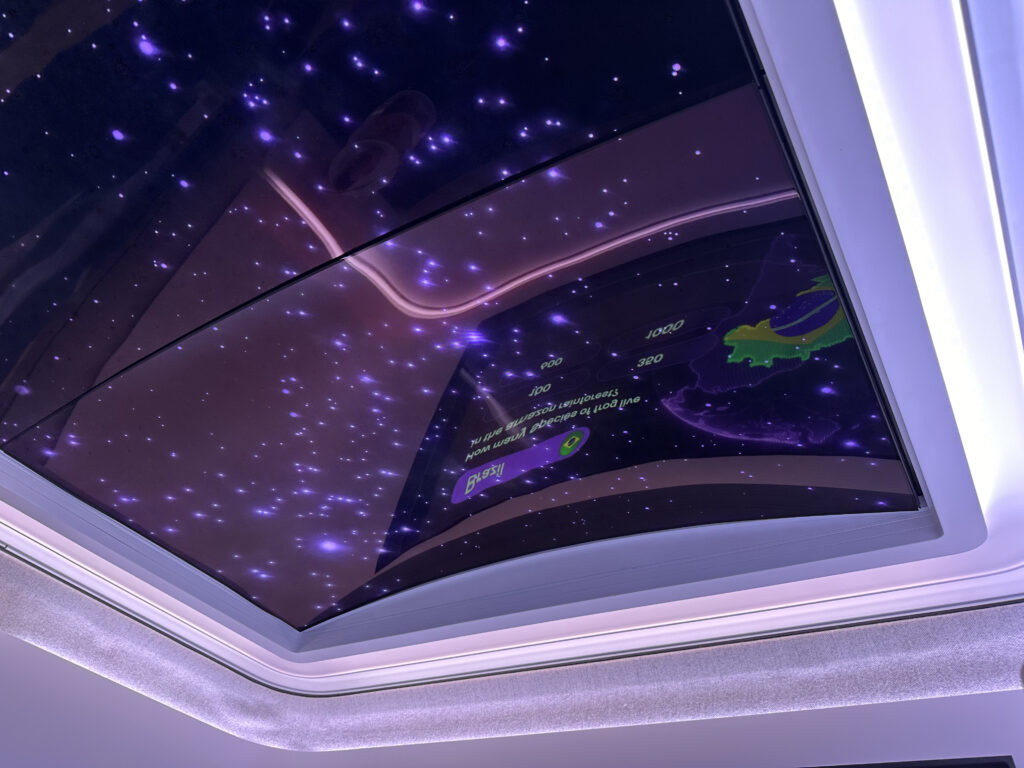
The roof is simply stars — is this enough of a use to justify the weight and cost? Image: John Walton
Many of the use cases can be replicated via preflight or post-landing display on inflight entertainment screens: baggage claim on arrival, for example, or a linear visualisation of the flight journey.
Wayfinding information on board could be provided in the airline’s app or as part of a next-gen mobile boarding pass. And the starry ceiling could be tiny twinkling low-power LED lights.
(At the same time, one could also say the sky’s the limit. In addition to a welcome screen and wayfinding, AERQ is for instance separately looking to use large cabin OLED screens to facilitate upgrade offers, provide weather and destination content, showcase buy-on-board menus and advertising, and set the cabin ambiance.)
It will be interesting to see how this concept spurs further questions around use cases, but the question of perching is already a pointed one, especially in the context of a push by Boeing to highlight its work around accessibility — both at AIX and in its own work.
The Perch is a luxuriously designed space that feels very premium.
However, there is a certain level at which perching designs — as opposed to seated bars, even the high-top seating that has infected so many airport lounges — feel almost like a kind of hostile architecture designed to prevent passengers from spending time comfortably.
That’s before we get into questions of equity for passengers with reduced mobility, disabled travellers, and anyone else for whom perching is fundamentally uncomfortable.
Related Articles:
- AERQ presents new use cases for OLED screens in the cabin
- Virgin Atlantic shows off premium leisure space, The Booth
- Collins adds mid-cabin Switch to door-bar monument family
- Qantas reveals world-first wellbeing zone for A350
- HAECO’s satisfyingly transformative galley monument is a delight
- Collins’ convertible door bar-lounge-service-sales monument impresses
Featured image credited to John Walton




